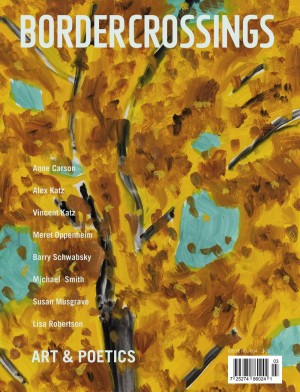Emma Nishimura
Hundreds of people, past and present, persistently contribute to Emma Nishimura’s creative process. They are what French philosopher Jacques Derrida would have called “spectral bodies,” representing a politics of memory that always accompanies the artist. Nishimura makes previous generations a part of her day-to-day practice. The faces and voices of lives previously lived— some of them family members, others whom she never met—are translated into photographs, photo etchings, drawings and writing. Paradoxically, their omnipresence is what makes them spectral, a steady confirmation that their existence will never again be ignored.
As a vivid presence in the gallery, Nishimura’s Japanese-Canadian heritage transforms the burden of generational trauma into weightless bundles of hope and joy. Tragic attempts of racial erasure become little treasures in the shape of furoshiki, the Japanese art of wrapping gifts with beautifully sturdy fabric that is not meant to be ripped off but to last as long as possible. The delicate bundles forming An Archive of Rememory, 2019, populate the gallery shelves, their multiplicity securing a well-deserved space denied to the original bodies they represent. A pragmatic metaphor of resistance knows how to disentangle itself from the need for roughness. “Japanese paper is so strong but looks so fragile—the paper remembers where it has been folded,” explains Nishimura. And so, a new series was born: in “Generational Echoes,” 2022. Presented at United Contemporary for the first time, the bundles have been preserved in a different format, a two-dimensional photo-documentation that reveals only one side of the sculptures.

Emma Nishimura, An Archive of Rememory, photogravure on flax and abaca, each varying dimensions of 7.62 × 7.62 × 6.35 centimetres. Courtesy United Contemporary and the artist. Photo: Christine Lim.
Nishimura’s father, uncles, aunts and siblings never spoke Japanese. In Canada, the mother tongue of their ancestors was material proof of the brutalities of the internment camps in British Columbia, where 22,000 Japanese Canadians were sent during World War II. Their descendants were taught to forget, move on and disappear into the landscape. In other words, they were given directives to survive the dictatorship of racism. The artist’s most remarkable encounter with these stories was through their elusive traces kept for decades in a box, astonishingly well-preserved as evidence of their caregiver’s zeal. They were her grandmother’s treasures, more than 200 sewing patterns made in craft paper, indicating that she was likely sewing for women, men and children in her internment camp.
To make room for artworks that carry within them the same care cherished by the family’s matriarch, Nishimura elaborated a relentlessly detailed process of making. She interviewed family members and then found out that she could “write really small,” so she transcribed these conversations into lines of words that can be read only with the help of magnifying glasses. The visual aid rests patiently beside her maps that form the work Constructed Narratives, 2013, whose strips marking borders, bodies of water and land are all made of countless narratives of a time that has remained silent for so many people. “My grandfather referred to the camps as ‘the place where he worked’ when showing family albums. He didn’t speak much about that time,” reminisces Nishimura, in a tale that is compatible with well-known survival strategies.

Emma Nishimura, installation view, “Rememory: Echoes and Archives,” 2023, United Contemporary, Toronto. Courtesy United Contemporary and the artist. Photo: Christine Lim. Left to right: An Archive of Rememory, photogravure on flax and abaca, varying dimensions of 7.62 × 7.62 × 6.35 centimetres; Generations of an Archive II, 2022, photo etching on Hahnemuhle paper, framed in bleached maple, edition of 5, 76.2 × 101.6 centimetres; Generations of an Archive I, 2022, photo etching on Hahnemuhle paper, framed in bleached maple, edition of 5, 76.2 × 101.6 centimetres.
Psychologist and professor Bryana H French defines “radical healing” as an approach to overcoming trauma specific to people of colour. She maintains that POC heal collectively, resisting subjugation by counting on the support of their community through social action and activism. Within this framework, returning to ancestral roots and cultivating cultural authenticity are crucial elements to rebuild narratives and undo solidified systems of oppression. In her laborious practice, Nishimura has the constant support of many others who inspire and bear witness to her work. Her practice walks hand-in-hand with thousands, creating space for impacts in generations yet to come, and finally enabling trauma to dissolve as slowly and relentlessly as the process she engages in her work. ❚
“Rememory: Echoes and Archives” was exhibited at United Contemporary, Toronto, from March 30, 2023, to May 6, 2023.
_Renata Azevedo Moreira (she/her) is a Brazilian author, researcher and curator based in Toronto. She holds a PhD in Communication Studies from the Université de Montréal. Renata’s process-based curatorial practice is inspired by queer, feminist and postcolonial gestures.

